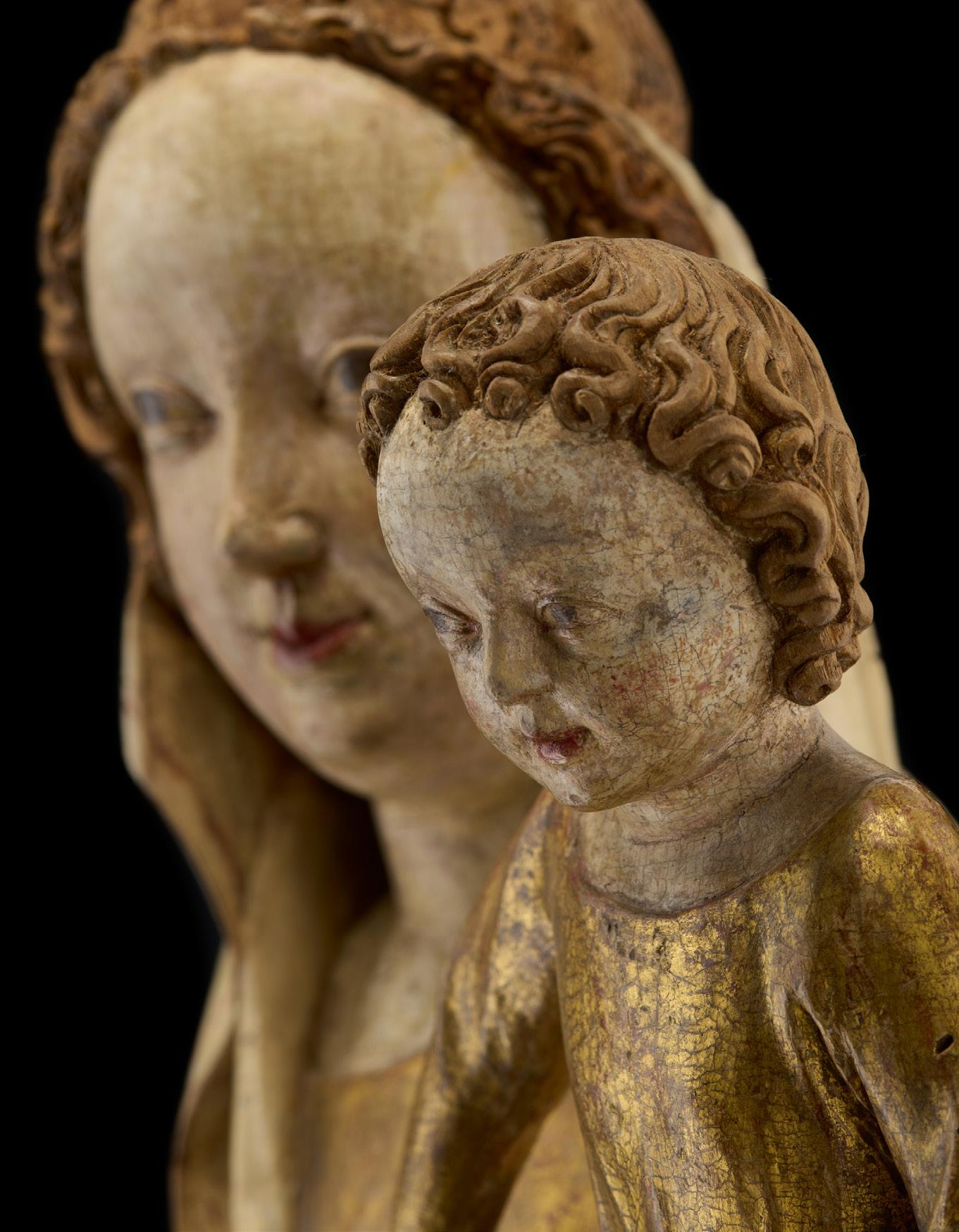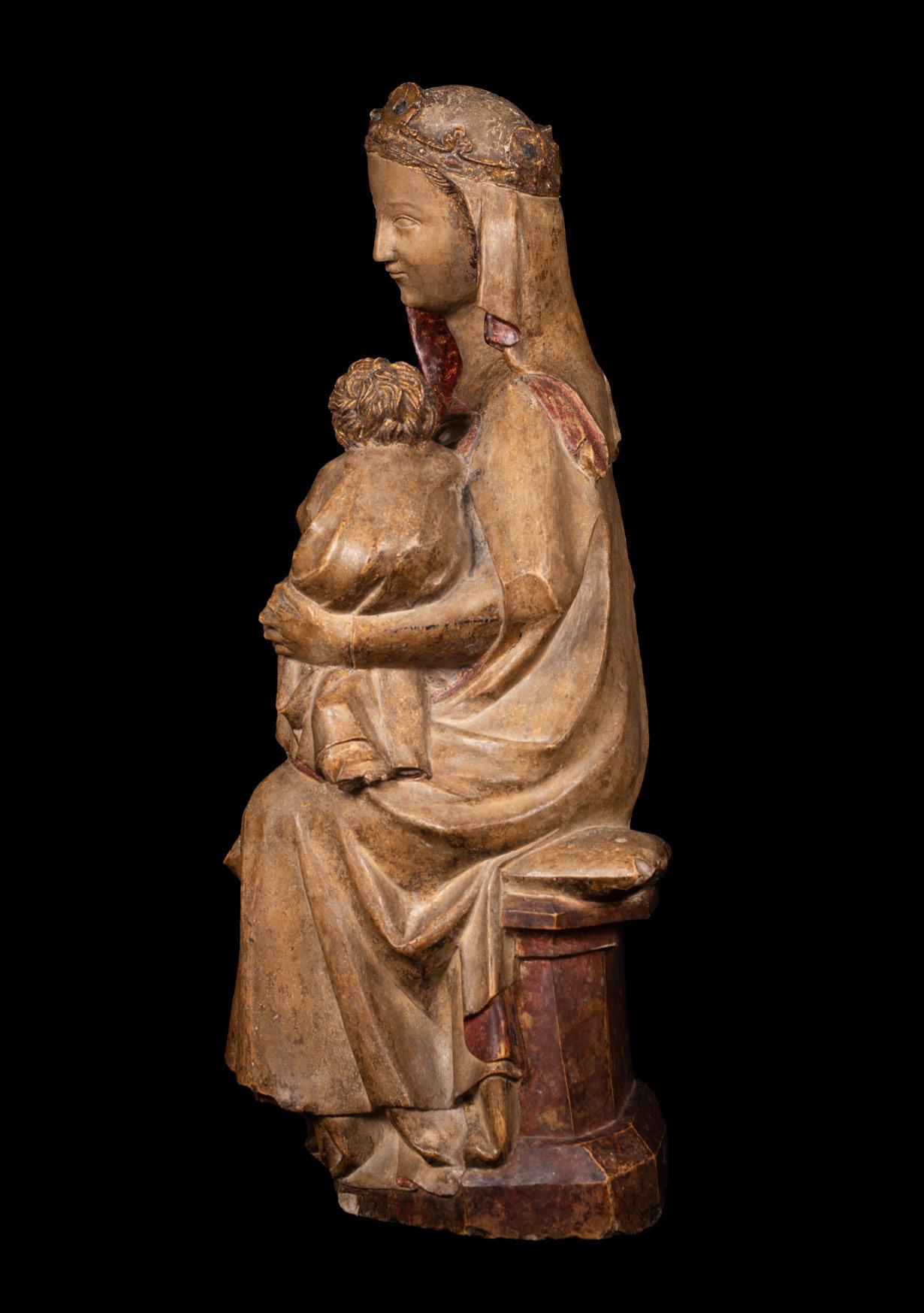
4 minute read
03 Enthroned Virgin and Child
from JB Test 01/22
ENTHRONED VIRGIN AND CHILD
France First half of 14th century
Advertisement
Limestone with original polychromy Height: 57.2 cm
Provenance: Collection Delannoy, Paris; Collection Georg Schwarz, Berlin; Collection Hugo Benario, Berlin; Leopold Blumka.
Literature: Die Sammlung Georg Schwarz: Bildwerke der Antike und der christlichen Epochen in Holz, Stein, Ton und Bronze, exhib. 20-23 May 1917, Cassirer-Helbing, Berlin 1917, cat. no. 102.
Volbach, Wolfgang Friedrich. Die mittelalterlichen Bildwerke der Sammlung Benario, Verlag für Kunstwissenschaft, Berlin 1923, cat. no. 6, plate IV.
Sammlung Hugo Benario, Rudolph Lepke’s Kunst-Auctions-Haus, Berlin 1976, cat. no. 81, plate 3.
Related literature: Vitry, Paul and Brière, Gaston. Documents de Sculpture Française du Moyen Âge, D.A. Longuet, Paris 1904-13.
Forsyth, William H. ‘The Virgin and Child in French FourteenthCentury Sculpture: A Method of Classification’ in: The Art Bulletin, vol. 39, no. 3 (September 1957), pp. 171-182.
Little, Charles T. Set in Stone: The Face in Medieval Sculpture, The Metropolitan Museum of Art, New York 2006. The Virgin Mary, with a peaceful and loving facial expression, is seated on a cushion that rests on a marbleised cuboid pedestal. She is wearing a modest crown decorated with painted gems and round spires, a belted gown, a long mantel and pointed shoes. With her left arm she cradles the Christ Child sitting on her left knee while proffering him her breast with her right hand. Christ’s right arm of is not depicted, nor is his right foot, though his left foot juts out from under his robe onto the Virgin’s lap. His left hand rests on the Virgin’s right hand.
The group is a supreme example of Maria Lactans (Nursing Madonna) iconography as could already be found in both 9th and 10th-century Coptic art as well as later in Byzantine painting and sculpture. However, it gained much wider popularity in 12th-century medieval Europe during the period’s movement towards realism and humanism. The iconography continued to be actively used in painting and sculpture into the Renaissance. Based on William H. Forsyth’s article, as well as the book by Dr. Charles T. Little, Curator Emeritus of Medieval Art and The Cloisters, The Metropolitan Museum of Art , it is presumed that our Virgin and Child Enthroned comes either from near the Île de France or North of that region.
Remains of gilding can be found on the hair of the two figures as well as on the Virgin’s crown and, selectively, throughout the garments of both (i.e. along the trim and sleeves, the Virgin’s belt and around the dark, diamond-shaped decorations of the Virgin’s robes). Areas of red polychromy remain in the folds of the Virgin’s veil and mantle, on the interior folds of the garments of both figures and on decorative details of the Virgin’s crown. The marbleised pedestal is painted red, green and yellow in what appears to have been a wet-on-wet application. There is also black polychromy on small, selective areas that appear to serve mainly as embellishments and outlines for gilding on the crown and in the trim of the garments.
03
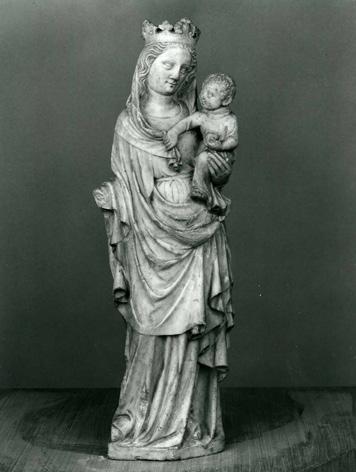
Fig. 1. Virgin and child seated with dragon underneath her feet, Île-de-France, circa 1300-1325, wood, 116 x 54 x 36 cm, Musée du Louvre, Paris, Inv. no. RF1369
Fig. 2 Standing Madonna and Child, first half of the 14th century, Musée du Louvre, Paris, Inv. no.
Fig. 1. Virgin and child seated with dragon underneath her feet, Île-de-France, circa 1300-1325, wood, 116 x 54 x 36 cm, Musée du Louvre, Paris, Inv. no. RF1369
Fig. 2 Standing Madonna and Child, first half of the 14th century, Musée du Louvre, Paris, Inv. no.
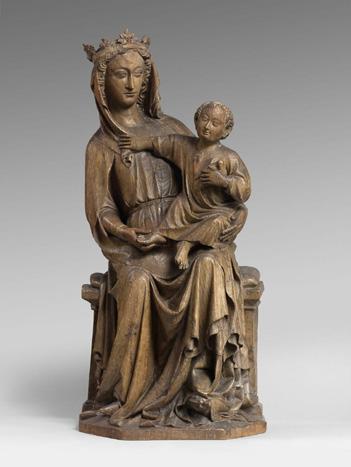
03
This excellently preserved sculpture shows numerous similarities to the ‘Sitting Madonna’ from the collection Bossy, now in the Louvre in Paris (fig. 1) and the ‘Standing Madonna and Child’ from the Collection Timbal, now also in the Louvre in Paris (fig. 2).
In 1765 Seinsheim commissioned Tietz to submit new designs for the court garden at Veitshöchheim near Würzburg. To accompany the architectural plans he devised a comprehensive sculptural agenda. The court sculptor made a major contribution to peopling the garden with allegorical stone figures from mythology between 1765 and 1768. Upon completion in 1776, some 300 figures decorated the garden, of which some 200 have survived. They were originally painted à la porcelaine2 that would certainly have made an impressive sight.
In 1767 Ferdinand Tietz was also appointed court sculptor in Würzburg. However, after completing his commissions for Würzburg and Bamberg he did not receive any further work of note.
His playful style reflecting the zeitgeist of the Rococo period was no longer in keeping with the increasingly sobre and seemingly harsh lines of emerging art tastes. Tietz died in 1777 at the age of 69 in Seehof near Bamberg.
Our figurative group is a model that would have been presented to the patron who gave the commission, presumably Adam Friedrich von Seinsheim, before work started on the large sculpture in stone. A youthful-looking, nude woman is depicted in a dynamic pose standing on an octagonal pedestal with sweeping concave curves and a central floral relief. A small putto and woman in peasant’s garb kneeling at her feet proffering a sheaf of grain, form her entourage. The ripe corn is an attribute of the Roman goddess Ceres and reveals the sensual beauty as an allegory of summer.
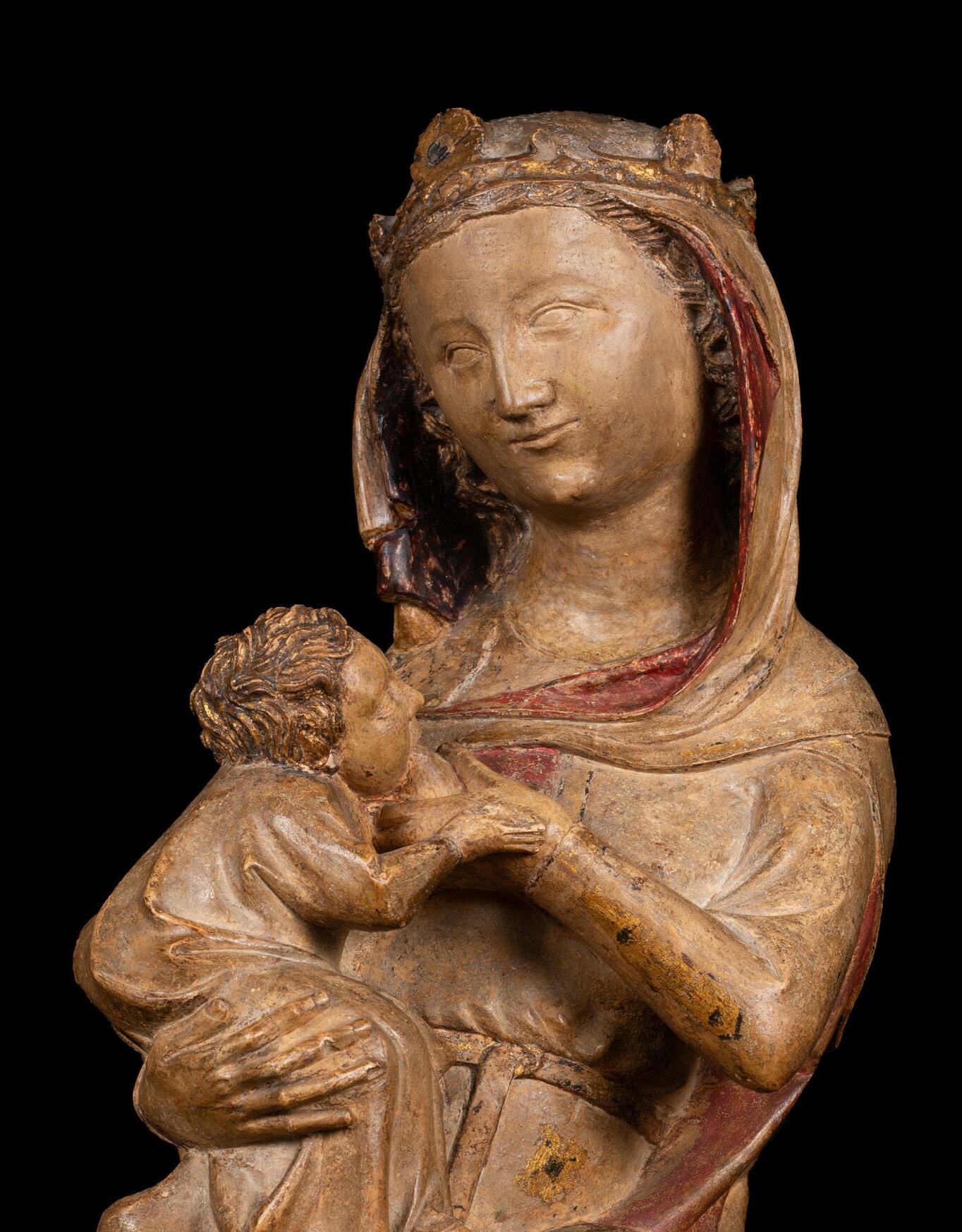
Virgin and Child
04
